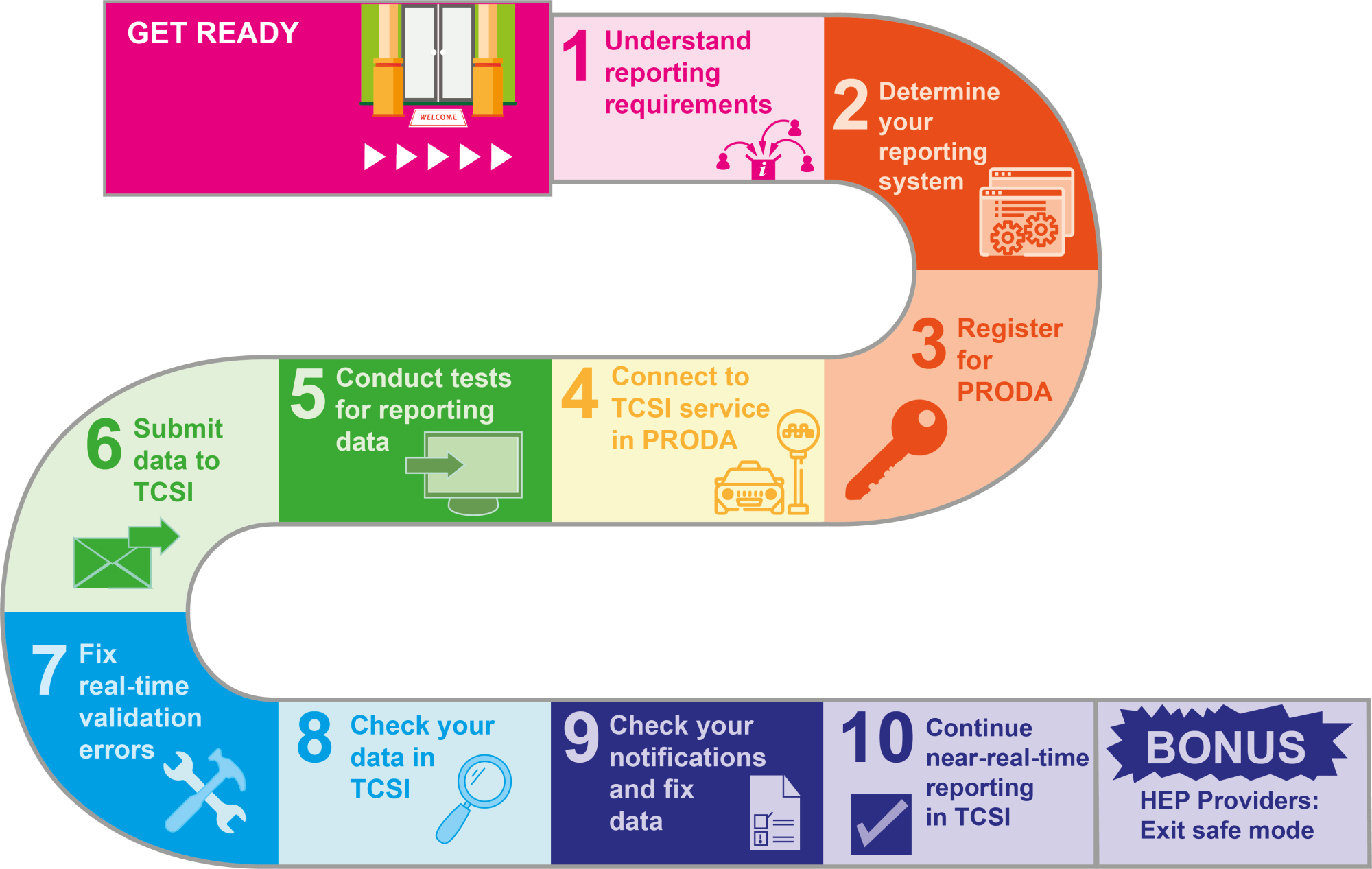Why do you report?
If your organisation is an approved provider under the Higher Education Support Act 2003 (HESA), you have responsibilities to:
- your students, to ensure they know how much Commonwealth Assistance they have accepted and how much they can expect to repay through their taxation; and
- the Australian Government.
Students must have accurate information about their available and remaining funding and repayments.
Provider payments are based on enrolment estimates and are paid in advance, in return, providers must report certain data within specific timeframes data so that payments can be reconciled.
Importantly, data can be used to better inform program and policy development, drive research, publications, and innovation.
What do you report?
In general, a data collection contains multiple data groups, those groups contain multiple data packets and those packets contain multiple data elements. A data element is essentially a piece of information formatted in a particular way. It might be birthdate, a code relating to field of education, or the outcome of a course of study.
The scopes of the packets in the student collection and the data elements are key to understanding what information you are required to collect from your students.
Example 1 - What do you report?
|
For example;
The Student Collection contains the Students group, Course admissions group, Courses on campus group, Courses of study group, the Courses group, etc.
The Students group contains the Student packet, the Disability packet, the Citizenship packet, and more.
The Disability packet contains three data elements to report on disability status; E615: Disability code, E609: Disability effective from date and E610: Disability effective to date.
|
Higher education data reporting requirements are issued by the department through a Ministerial Notice under subsection 19-70(1) of HESA.
Ministerial Notices are in the form of an Instrument for Reporting and a Change Control document published on a year’s reporting requirements page.
The Instrument for Reporting is a document approving the form in which data must be lodged and signed by the minister’s delegate. The Change Control document identifies changes to the collection from one year to the next or any changes due to updates.
For example, please see the Instrument for 2022 reporting and the 2022 TCSI Change Control documentation for further information about updates to reporting 2022 data in TCSI.
The Administrative information for higher education providers (AIP) helps providers understand student support policies under HESA and its associated guidelines. It includes key requirements about reporting data (section 36) and other student support information.
Provider types
Your provider type identifies your organisation’s access to Commonwealth grants and what data you are required to report.
You can view your provider type on the Appendices, codes and tables page under Appendix A - Higher education, VET & PIR provider codes and names.
|
Provider Type
|
Reporting Requirement
|
|
University
(listed under Table A or B of the Higher Education Support Act 2003 (HESA)
|
Higher Education Student data
University Staff data
University Applications and Offers data
|
|
Higher Education provider, approved to offer HELP loans
|
Higher Education Student data
TEQSA Provider Information Request (PIR) Staff data
|
| Higher Education provider, but not approved to offer HELP loans |
Please consult the How to report the TEQSA Provider Information Request page. |
|
Tertiary Admission Centre
|
University Applications and Offers data
|
A dual provider is approved as both higher education and VET provider and reports both data according to their higher education provider type and VSL data.
Please review the relevant reporting requirements for your provider type.
Four collections are included the higher education reporting requirements;
The Higher Education Student collection
-
courses and campuses
-
students’ enrolment information, study load, debt for all units of study undertaken in the reporting year and their personal details including their names, addresses and tax file numbers and Commonwealth Higher Education Student Support Number (CHESSN)
-
Unit of study completions
The University Staff Collection
The University Applications and Offers Collection
For detailed reporting requirements please visit each collection from our reporting page.
There are also TCSI mapping tables available for the translation of allowable values from HEPCAT to TCSI.
When do you report?
Each reporting requirements packet, which is a sub-group of data within a data collection, will list deadlines for each data element to be reported in TCSI
Student data
In most cases, due dates for reporting student data elements in TCSI is within 7 days of an event.
The student reporting timeframes are listed on each packet page under the 'Initial reporting requirement header'.
Example 2 - When do you report student data?
|
For example;
The Higher Education Unit Enrolment packet contains due dates for each element in the packet in the 'Deadline' column. In the current example, the deadline is 'Within 7 days of the student enrolling in a course of study'.
 . .
|
As per the reporting requirements, while early reporting is encouraged, reporting more than six months in advance of a census date is optional for Unit Enrolments and any linked packets.
Staff and University Applications and Offers data
For the Staff collection and the University Applications and Offers collection, the deadlines are annual and involve a reference date for the data that is to be reported by a particular date.
Example 3 - When do you report Staff, Uni Apps and Offers data?
|
For example;
The Full-time staff packet for 2022 outlines the following deadline for reporting:
The reference date for the 2022 Staff Collection is 31 March 2022. All full-time staff data for this reference date is to be reported in August 2022.
|
Don’t wait until the due date to start reporting your data. To successfully report, you will need enough time to prepare, validate and submit your data.
A video outlining how to interpret HEP reporting requirements is also available to help you.


 .
.
